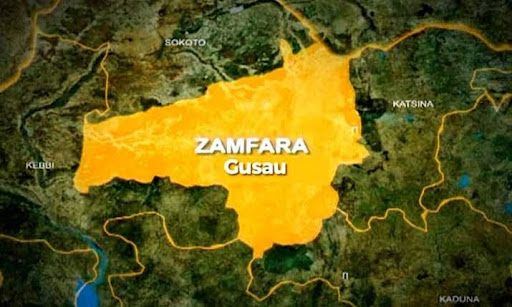A recent study conducted by the Improving Nigeria’s Capacity to Use Data on Registered Stillbirths for Decision Making and Planning otherwise known as SPEED project, has revealed alarming rates of stillbirths in Zamfara and Kastina state.
The project study which was implemented by the International Research Centre of Excellence(IRCE) at the Institute of Human Virology in Nigeria(IHVN), showed that Zamfara State has the highest stillbirth rate in Nigeria, followed by Katsina, Gombe and 32 others based on an analysis of national stillbirth records from the Federal Ministry of Health from 2013 to 2023.
The SPEED Project Principal Investigator, Oghome Emembo while speaking with media at the end of the Project Dissemination and Closeout Meeting on Friday, explained that the data analysis shows that Zamfara State has the highest stillbirth rate among 35 states in Nigeria, which points to critical management gaps such as cultural, and behavioral factors.
She added that there is a need for intensified behavior change communication to improve attitudes towards antenatal care, spousal involvement, and investment in maternal and healthcare services in Zamfara State.
The study’s findings highlight the need for urgent action to address the high stillbirth rates in Zamfara State.
ALSO READ: Senate harps on improved health services to reduce stillbirths
To combat this issue, Emembo stressed the importance of improving data reporting and utilization.
She said, “By enhancing data collection and analysis, healthcare providers and policymakers can better understand the root causes of stillbirths and develop targeted interventions.”
She also disclosed that one of the key achievements of the SPEED project is the approval of policy recommendations by the Minister of Health, Professor Mohammed Ali Pate.
Emembo continued, “The recommendations include the inclusion of stillbirth data in the quarterly reporting system, ensuring that stillbirths are closely monitored and addressed.
“Additionally, the Minister’s Office has incorporated stillbirth data into its dashboard, enabling real-time tracking and response.”
“The SPEED project has also facilitated the expansion of the Helping Babies Breathe program to Zamfara State.”
“This program provides critical training for health workers in maternal and healthcare services, equipping them with the skills to resuscitate babies on the verge of stillbirth.”
“By scaling up this program, the SPEED project aims to reduce stillbirth rates and improve maternal and child health outcomes in Zamfara State.”
As the SPEED project comes to a close, the Principal Investigator issued a national call to action, emphasizing the need for collective consciousness, awareness, and data-driven approaches to prevent stillbirths in Nigeria.
“By working together, stakeholders can reduce preventable stillbirths and improve the health and well-being of mothers and children across the country.” She said.
In his remarks, the Assistant Director and Coordinator, IRCE, Dr. Evaezi Okpokoro urged state governments to take a cue from a state like Osun and Ogun to strengthen the fight against stillbirth in Nigeria.
He said, “We need to understand what’s happening in Osun and Ogun, why is stillbirth rate consistently low compared to other states? Is there need for more training in the health care facilities? Is there need for infrastructural support? We need to understand why.”
“We also need to improve healthcare services including trainings for SBAs (Skilled Birth Attendants) and continuous orientation for pregnant women for antenatal care packages to be effective.”
He also noted that SPEED had championed Institutional learning, communication and advocacy programs considering states where stillbirth rate was higher.
He, therefore, requested that despite the closeout, they should continue to support the possible advocacy program at the state level, particularly, since they have supported the journey from the national level, they can support the states to improve and drive this policy reduction program.
